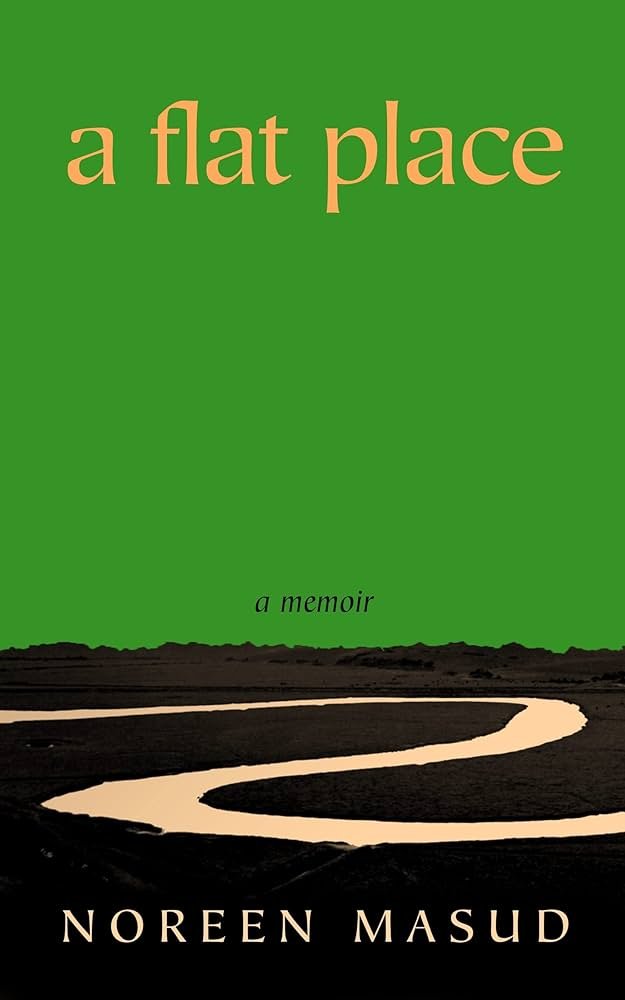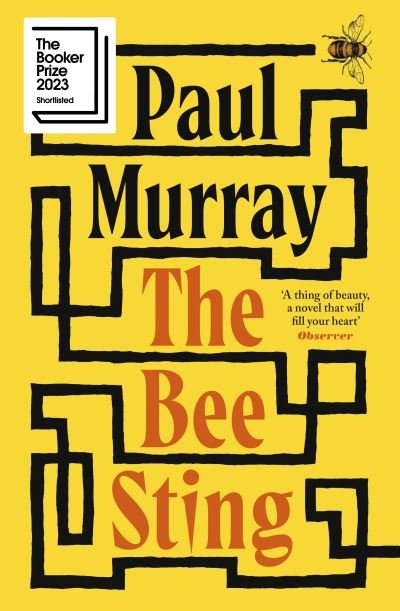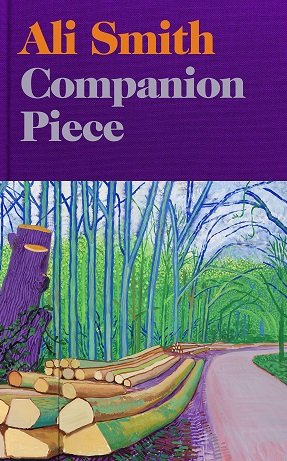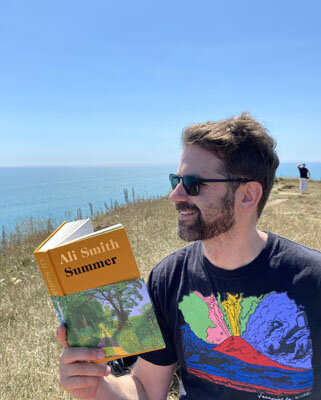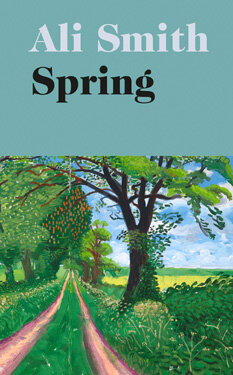I'm filled with eager anticipation when I open up a novel and discover it begins with a family tree because I love a rich saga that follows multiple generations. Kiran Desai's new novel is doubly exciting as it begins with charts of the two family trees belonging to its titular protagonists, Sonia and Sunny. This is a giant 670 page book which is the author's first novel in nearly twenty years since “The Inheritance of Loss” which won the 2006 Booker Prize. It's perhaps not surprising this book is so long considering how it's stated within it that “A writer itched and itched to put everything into a book, or it became unbearable.” This novel certainly contains a lot concerning intergenerational conflicts, national/cultural/racial identity, different forms of romance, professional aspirations and the weight of colonial history.
I became thoroughly immersed in the lives and journeys of these characters after spending so much time with them, but I do want to give a small piece of advice which I wish I'd known about before reading this novel. Early on in the book I was somewhat put off by one of the storylines concerning aspiring novelist Sonia's toxic romantic relationship with Ilan, a much older, wealthy and controlling artist. I feel like there have been numerous novels that explore the dynamic of an intelligent young woman falling under the sway of a manipulative older man so I was uncertain if I wanted to continue reading a book which tells a similar story. However, I think Desai is partly interrogating familiar tropes in this novel because it's later remarked that “if Sonia managed to write the story of herself and Ilan, it would fall into a tedious stereotype of older, monster male and younger, aspiring female artist. A story that kept occurring, kept on being repeated ad nauseam.” That such a story keeps happening says something about our culture because despite some social progress and feminism young women continue to be taken advantage of and emotionally manipulated by older men. So if you're equally wary of reading such a tale I'd advise you to persist with this novel because it has a unique way of approaching it.
Sonia feels the tension between representing her life in fiction and that experience being perceived as a stereotype in a number of different ways. She's warned early on that her fiction shouldn't fall back on “orientalist” tropes which concern arranged marriages and magical realism. So she starts to censor herself and feels self conscious about how to express herself on the page. I feel like Kiran Desai is playing with these expectations because she also gives us a story concerning a bungled attempt at an arranged marriage and a demonic dog which plagues one of the main characters. However, the novel takes on an unusual form and doesn't play out in an expected way. It primarily follows the experiences of Sonia and young journalist Sunny who were both born and raised in India but have been living in America and trying to start their careers there when the novel begins. The novel is partly a romance, but more than pursuing the question of will they or won't they get together it's more about the professional aspirations of these two individuals and figuring out their own positions in the world. They are immigrants who experience different forms of racism and struggle with feelings of isolation and the pressure of expectations while communicating with their families back in India. Their parents contend with institutionalised corruption and the legacy of colonialism and Partition which so affected Sonia and Sunny's grandparents. This is all material which has been covered in a lot of fiction, but I think the author is showing how these are all issues that the participants still deal with in a tangible way and she takes a unique approach to dramatising them.
What I liked most about this novel was getting to know the characters in an intimate way over a sustained length of time. A lot of tragi-comic feeling emerges from these individuals interacting with each other. I felt very invested in both Sonia and Sunny and the winding paths their lives take. But I also developed a lot of affection for many of the peripheral characters. There is Mina Foi (Sonia's aunt) who became known as a “bad luck daughter” early on in her life and has been branded as this ever since. Sunny's lifelong friend Satya is also making his way in America as a young doctor and he resolves to bring a wife back from India. One of the most prominent characters is Sunny's mother Babita who lives off from her inherited wealth and has many non-politically correct opinions. It's hilarious how she steels a round of camembert cheese from a French embassy. She's the kind of domineering figure I love reading about but would never want to meet in real life and the way her story plays out is very poignant. I also appreciated that there are a number of gay characters that members of these families befriend who are very different from each other and don't feel stereotypical. So I came to feel very invested in these characters' lives and miss many of them now that I've completed reading the novel.
I also thought it was powerful how the novel explores loneliness in many different forms. The novel begins with Sonia feeling extremely isolated working at a library in a college in Vermont during an extremely snowy wintertime. Coincidentally, I also studied at a college in Vermont over two winters and spent a lot of time on my own in the library so I entirely understand how she felt. However, Sonia is made aware that her sense of loneliness is relative when she meets a character who felt painfully isolated living under a dictatorship because she feared she might be reported on if she ever confided her true feelings about the regime to her friends or family. Sunny's mother Babita feels loneliness in another way as she's aware Sunny often lies to her about his life and she feels the gulf between them as she waits for him to “own up to his lies”. There are also individuals who are ostracised by the community for their actions and there's a cruel groupthink which hopes those individuals will “remain alone forever.” Desai considers the many different ways loneliness takes shape and how solitude can alternately be debilitating or a source of strength as Sonia's mother Seher finds when living a relatively isolated life reasoning that: “There are worse things than loneliness. Loneliness could mean abiding peace. It could mean understanding your happiness backward, when you happened to exclaim out loud, surprising yourself when there was no apparent reason, I'm happy!”
I enjoyed the many literary references throughout this novel and the meditations on reading it presents. At one point Sonia makes the apparently contradictory statement that her favourite novel is Kawabata's “Snow Country” even though she's never read the book in its entirety. In another section it's remarked that “when Dickens is better than your life, then why live your life? It would be foolishness not to read Dickens instead.” I can certainly sympathise with the sense that life within a novel can often seem so much more exciting than real life. Later on in the novel some characters watch 'Murder on the Orient Express' and the plot of the murder mystery is linked to this novel's story in a surprisingly poignant way. Naturally as Sonia is an aspiring novelist she considers the best way to capture her voice on the page and determine what subject matter she most wants to write about. This feels especially complicated considering her position as someone who has left and returned to India: “There was perhaps a fundamental flaw in a brown person going to the brown world to tell the white world about the brown world, as if he were a white person believing in the centrality of the white world – and because of the central power of Western news outlets, also telling the brown world about itself (upside down) from this location.” This raises so many interesting questions considering the point of view an author is writing from and who is the intended audience. There's also a fear as it's asked “Were writers who embodied and illuminated their times eventually condemned by the more enlightened future they themselves helped bring into being?” Books which were once considered progressive come under more scrutiny as society changes and values alter over the years. It's interesting to ponder how Desai's novel might be viewed in the years to come as positively or negatively reflecting Indian identity because the characters express a multitude of opinions concerning corruption in the country as well as a tender love for it.
It's intriguing how part of the novel takes place in Mexico as the author's mother Anita Desai who is also a prominent writer has set books here as well. Many years ago Kiran interviewed Anita and it's intriguing to discover them discussing Mexico so it's clearly a location which interests Kiran as well. Anita remarks that “Mexico was different. It was such a strange experience, so entirely new. Never having learned anything about it living in India, I set off with the intent of exploring it, and found so much deeply familiar, with close connections between the Indian and Mexican, that was also, of course, an Indian world.” Kiran explores these connections as well as one of the protagonists moves there and contemplates the history of immigrants to Mexico as well as the way he is perceived by locals in the small community he settles into. At one point in the novel it's noted, “An immigrant story is also a ghost story and a murder story. You become a ghost, the people left behind become ghostly, sometimes you kill them by the heartlessness of leaving, sometimes you psychically kill yourself.” As someone who has settled in another country during his adult life, I found it poignant the way the novel considers the complexity of feelings an immigrant has about himself and the people he's left behind.
Although I enjoyed and appreciated this novel for the most part and didn't begrudge its length, I did feel like there were a couple of coincidences which stretched believability and only existed to propel the plot forward and create conflict. There's a dramatic scene where an item is retrieved later on in the book which felt somewhat forced and I felt Ilan was a character who could have been left behind much earlier in the story. I think perhaps Desai was attempting to dramatise Sonia's sense of trauma with a fantastical element, but this fell flat for me as I was much more concerned about her real life experiences such as an unsuccessful and disturbing trip she embarks on to Africa to write a commissioned travel article. Even though every part of this story didn't work for me, I was mostly swept up in its narrative and the lives of its many characters. One of the most poignant sections is when a character meditates on being in love: “She thought that this was what people spoke of when they spoke about love: You were outwardly more adult and treated with greater consideration, but secretly you were more childlike, more free, more full of laughter.” The way this novel charts its characters gradual maturity in discovering the true meaning of love and a deeper sense of self-acceptance is beautiful and moving. I was glad to fully envelope myself in this epic tale.


